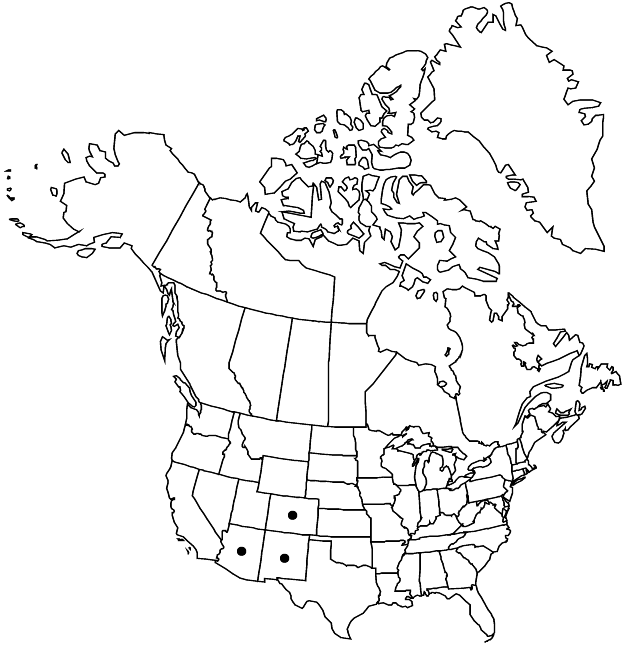Difference between revisions of "Drymaria depressa"
Leafl. Bot. Observ. Crit. 1: 153. 1905.
FNA>Volume Importer |
FNA>Volume Importer |
Revision as of 22:35, 16 December 2019
Plants annual, herbaceous, glabrous or minutely puberulent, not glaucous. Stems ascending to erect, generally branching at base, 0.5–5 cm. Leaves opposite; stipules ± deciduous, simple, subulate, 0.5–1.2 mm; petiole absent or nearly so; blade orbiculate to spatulate (basal leaves) or oblong (cauline leaves), 0.3–1 cm × 0.2–3 mm, base attenuate, apex rounded to acute. Inflorescences terminal, congested to open, 3–25+-flowered cymes. Pedicels mostly shorter than subtending bracts at maturity. Flowers: sepals with 3 prominent, ± parallel, apically confluent veins, lanceolate, oblong, or ovate (herbaceous portion ± oblong), 1.8–2.3 mm, ± equal, apex blunt or rounded, hood at ± right angle to apex, formed in part by scarious margins, glabrous; petals 2-fid for ca. 1/2 their length, 1.5–2.8 mm, 3/4–1 times as long as sepals, lobes 1-veined, vein unbranched, linear, trunk absent, base gradually tapered, apex rounded. Seeds light reddish brown to tan, snail-shell- to teardrop-shaped, 0.5–0.6 mm; tubercles minute, rounded.
Phenology: Flowering late summer–early fall.
Habitat: Rocky or gravelly slopes, disturbed areas in pine or aspen woodland
Elevation: 2200-3100 m
Distribution

Ariz., Colo., N.Mex., Mexico, Central America.
Discussion
Drymaria depressa has been treated as a variety of D. effusa, from which it differs in a number of respects, as indicated in the key.
Selected References
None.